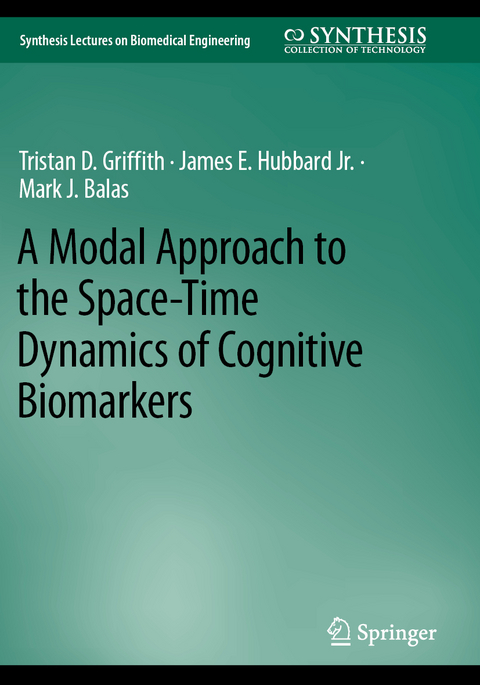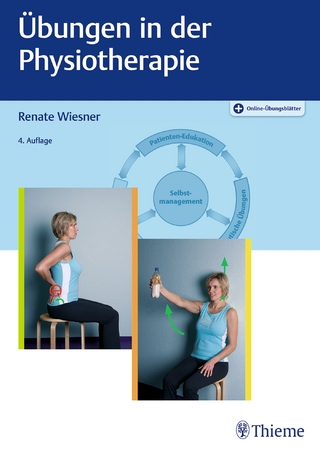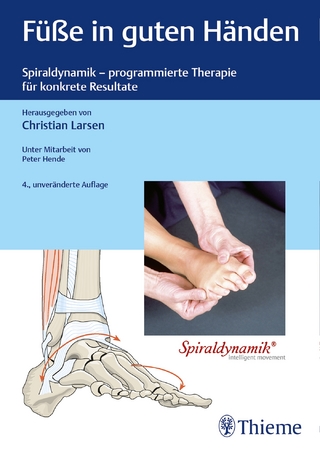
A Modal Approach to the Space-Time Dynamics of Cognitive Biomarkers
Springer International Publishing (Verlag)
978-3-031-23531-3 (ISBN)
A Modal Approach to the Space-Time Dynamics of Cognitive Biomarkers provides a much-needed reference for practicing researchers in biomarker modeling leveraging the lens of engineering dynamics.
Tristan Griffith, Ph.D., is a research engineer with the Morpheus Lab at Texas A&M University. His research focuses on modeling and control of highly nonlinear and stochastic systems. He graduated from Iowa State University, where his undergraduate research focused on modeling heavy machinery operators to estimate training time for significant interface changes, and received his Ph.D. from Texas A&M University.
James E. Hubbard, Jr., Ph.D., is a mechanical engineer who has made significant contributions to the field of aerospace engineering throughout a career spanning more than four decades in academia and industry. Dr. Hubbard is considered a pioneer in adaptive structures, having developed piezo-film sensors and piezoelectric actuation systems for suppressing vibration and noise, surface morphing, and other applications. He has published more than 100 technical papers and four books on adaptive structures and aeronautics. He co-founded three companies and has received 24 U.S. and worldwide patents, leading to technological advances benefiting the aerospace, medical, defense, and other industries. Dr. Hubbard is currently the Oscar S. Wyatt, Jr. '45 Chair I Professor and Fellow of the Hagler Institute for Advanced Studies at Texas A&M University in College Station, Texas. He was inducted into the National Academy of Engineering in 2016 and the National Academy of Inventors in 2021.
Mark Balas, Ph.D., is the Leland Jordan Professor in the Mechanical Engineering Department at Texas A&M University. He was formerly the Guthrie Nicholson Professor of Electrical Engineering and former Head of the Electrical and Computer Engineering Department at the University of Wyoming. He has the following technical degrees: Ph.D. in Mathematics, MS Electrical Engineering, MA in Mathematics, and BS in Electrical Engineering. Dr. Balas has held various positions in industry, academia, and government. He has been a university professor for over 40 years with Rensselaer Polytechnic institute, Massachusetts Institute of Technology, University of Colorado Boulder, University of Wyoming, and Embry-Riddle Aeronautical University and has mentored 45 doctoral students. He has over 350 publications in archive journals, refereed conference proceedings, and technical book chapters. Dr. Balas has been a visiting faculty member at the California Institute of Technology, Air Force Research Laboratory, NASA Jet Propulsion Laboratory, NASA Ames Research Center, and the University of Wyoming, where he was also the Associate Director of the Wind Energy Research Center. He is a life fellow of the AIAA and IEEE and a fellow of the ASME.
1. Introduction.- 2. A Dynamic Systems View of Brain Waves.- 3. System Identification of Brain Wave Modes Using EEG.- 4. Modal Analysis of Brain Wave Dynamics.- 5. Adaptive Unknown Input Estimators.- 6. Reconstructing the Brain Wave Unknown Input.- 7. Conclusions and Future Work.
| Erscheinungsdatum | 06.03.2024 |
|---|---|
| Reihe/Serie | Synthesis Lectures on Biomedical Engineering |
| Zusatzinfo | XIII, 132 p. 40 illus., 31 illus. in color. |
| Verlagsort | Cham |
| Sprache | englisch |
| Maße | 168 x 240 mm |
| Themenwelt | Medizin / Pharmazie ► Physiotherapie / Ergotherapie ► Orthopädie |
| Technik | |
| Schlagworte | Adaptive State Estimation of Biomarker Dynamics • Biomarker Dynamics • Black Box Biomarker System Identification • Brain Wave Adaptive Unknown Input Synthesis • Brain Wave Mapping Using EEG • Imaging Using Biomarkers • Modal Analysis of Brain Waves • Operational Modal Analysis of Biomarkers • Real-time EEG Imaging • State-space Models for Brain Waves |
| ISBN-10 | 3-031-23531-2 / 3031235312 |
| ISBN-13 | 978-3-031-23531-3 / 9783031235313 |
| Zustand | Neuware |
| Informationen gemäß Produktsicherheitsverordnung (GPSR) | |
| Haben Sie eine Frage zum Produkt? |
aus dem Bereich


